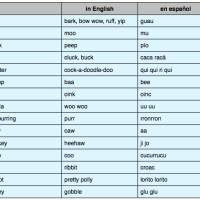Would you rather?
March 12, 2013 2 Comments
Cats or dogs? Chocolate or vanilla? Books or video games? Life is full of choices. Practice using the word “would” to express preferences with this popular conversation game.
1. Warm up. Each person introduces him- or herself and finishes the sentence “My favorite _____ is _____.” “My name is Teresa and my favorite food is watermelon.” “My name is Juan and my favorite color is blue.” “My name is Ana and my favorite sport is soccer.”
2. Introduce “would”. Ask everyone a question based on what they said in the warm up. “Teresa said her favorite food is watermelon. Juan, would you rather eat watermelon or strawberries?” If students are unfamiliar with “would,” explain that “would you rather” is similar to “do you prefer” when talking about the future.
3. Would you rather…? Write these questions on the board and have each person pick their answers. Then, put everyone in small groups and have them discuss what they picked and why.
-Where would you rather be on your day off?
- Playing a sport or taking a walk outside with a friend
- Sleeping in the sun
- At the mall with money to spend
-What would you least like to do?
- Listen to the news on the radio
- Listen to a live musical concert
- Listen to a lecture on politics
-Where would you rather live?
- In the mountains
- At the beach
- In a big city
- On a farm
4. What did he say? Students report to the group what their partners said. As a group, make a list of people who agreed with each other from different groups (ie people from different groups who picked the same answer(s).)
5. Survey time. As a group, make a list of situations with two options each, both of which are not particularly desirable. Would you rather always arrive 30 minutes late or two hours early? Would you rather wear only one color every day for the rest of your life or never have a raincoat or umbrella when you need one? Would you rather have spots like a cheetah or scales like a fish? Would you rather get in trouble for something you didn’t do if all your friends know you’re innocent, or not get in trouble for something you did do if all your friends know you’re guilty?
“Would you rather” is a popular game. You can find more “would you rather” questions here and here. Both websites allow you to vote and see how many other voters agreed with you. When you have a lot of options, each student picks two or three questions they would like to ask everyone. Each student surveys everyone in the class, and writes the results on the board.
6. Global feedback. Talk about the results as a class. Did anything surprise you? What did everyone agree on? What did people disagree on?
Conversation objectives: discuss hypothetical situations, build vocabulary through conversation, practice conditionals with would
Ideal group size: At least six players.
Ideal group level: Low-intermediate English
This post is part of our March Conversation Marathon. We publish a new conversation activity every Tuesday and Thursday during the month of March. To see the complete list of Marathon activities, click here.
For more general conversation topics, click here. For more conversation games, click here.






















¿Qué opinas?